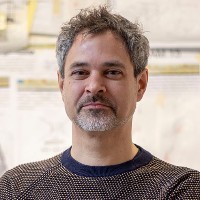Will Galloway

Assistant Professor
Faculty of Engineering and Architectural Science
Department of Architectural Science
Toronto, Ontario
will.galloway@torontomu.ca
Office:
(416) 979-5000 ext. 556495
Bio/Research
Will Galloway is no stranger to sudden change. Throughout his career, external events have necessitated adaptation, most notably, the 2011 earthquake and tsunami in Japan, which killed more than 15,000 people and displaced countless others while Galloway was teaching at Keio University in Tokyo. ...
Click to Expand >>
Click to Expand >>
Bio/Research
Will Galloway is no stranger to sudden change. Throughout his career, external events have necessitated adaptation, most notably, the 2011 earthquake and tsunami in Japan, which killed more than 15,000 people and displaced countless others while Galloway was teaching at Keio University in Tokyo. "The entire faculty became focused on how to deal with reconstruction and, in my case, resilience,” recalls Galloway. "Adaptation is dealing with disaster after the fact, but if you want to be resilient, you need to be ready for what you don't know is coming down the line."
While we know what challenges our built environment is expected to face – rising temperatures and sea levels, increased wind speeds, more powerful storms and persistent drought, to name a few – Galloway contends that it isn’t enough to simply mitigate the effects of climate change. "You cannot just reduce carbon, because sea levels are already rising. We need to find ways to be more adaptive from the beginning." It's a tall order for architects, who today are tasked with more than just providing attractive housing. "If you only focus on that one aspect, you're not going to be able to solve the big problems – whether it's changing population, changing climate or changing economics. I'm interested in how to deal with those kind of global impacts through design."
Click to Shrink <<
While we know what challenges our built environment is expected to face – rising temperatures and sea levels, increased wind speeds, more powerful storms and persistent drought, to name a few – Galloway contends that it isn’t enough to simply mitigate the effects of climate change. "You cannot just reduce carbon, because sea levels are already rising. We need to find ways to be more adaptive from the beginning." It's a tall order for architects, who today are tasked with more than just providing attractive housing. "If you only focus on that one aspect, you're not going to be able to solve the big problems – whether it's changing population, changing climate or changing economics. I'm interested in how to deal with those kind of global impacts through design."
Click to Shrink <<
Links
Media Relations
Michelle LePage
PR and Communications Specialist, Central Communications
michelle.lepage@torontomu.ca
Click to Expand >>
PR and Communications Specialist, Central Communications
michelle.lepage@torontomu.ca
Click to Expand >>
Media Relations
Michelle LePage
PR and Communications Specialist, Central Communications
michelle.lepage@torontomu.ca
Karen Benner
Director, University Communications
karen.benner@torontomu.ca
(416) 979-5000 ext. 553494
Click to Shrink <<
PR and Communications Specialist, Central Communications
michelle.lepage@torontomu.ca
Karen Benner
Director, University Communications
karen.benner@torontomu.ca
(416) 979-5000 ext. 553494
Click to Shrink <<